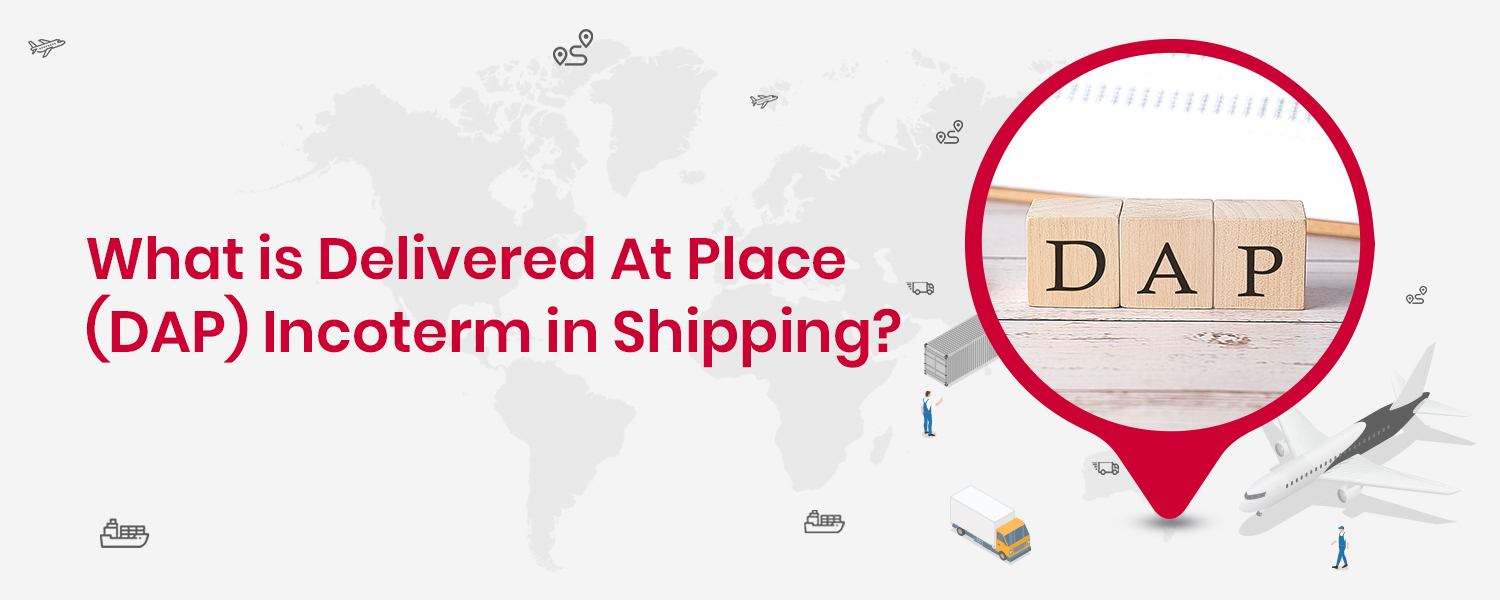International shipping rules and regulations are as intricate as their routes, and there lie incoterms that provide clarity in communication and precision in responsibilities between businesses.
The DAP Incoterm, short for “Delivered at Place,” is where the baton of liability and risk is passed seamlessly from the seller to the buyer at an agreed-upon destination. This seemingly simple transfer encapsulates the core of international trade– coordination and trust.
For eCommerce businesses, understanding DAP is a strategic necessity as more and more online shoppers purchase from overseas retailers. Mastering the nuances of DAP could be the difference between expanding your global footprint or being confined to local boundaries. Let’s discuss DAP comprehensively in this blog.
Comprehensive Overview of DAP Incoterms
At its core, DAP delineates the responsibilities of the seller and the buyer with crystal clarity. Under DAP, the seller must deliver the goods to a location designated by the buyer. This delivery point could range from the buyer’s warehouse to a port in the importing country. The unique aspect of DAP lies in its flexibility; it is applicable across various modes of transport, be it air, sea, road, or a combination thereof, making it a versatile choice in complex global logistics.
For example, imagine a seller based in Germany is shipping machinery to a buyer in Canada. Under the DAP Incoterm, the seller is responsible for all costs and risks involved in transporting the machinery to a specified location in Canada, perhaps the buyer’s warehouse in Toronto. This responsibility encompasses several tasks:
- Packaging the machinery
- Handling inland transport in Germany
- Managing export customs clearance
- Freight forwarding
- Arranging for international couriers
The risk and responsibility shift to the buyer once the machinery arrives at the Toronto warehouse. The buyer then takes on the task of unloading the machinery and managing any import formalities, including customs clearance and payment of import duties and taxes.
Detailed Breakdown of Seller’s Responsibilities
1. Delivery, Packaging, and Inland Transport
The seller’s responsibilities begin right from when the goods are ready for shipment. Under DAP, the seller must ensure the goods are adequately packaged, safeguarding them against damage during transit. This might involve waterproofing, cushioning, or using specialised containers for fragile items. Once packaged, the seller must organise and manage the inland transportation of the goods from their warehouse or factory to the initial point of export.
2. Handling Export Customs, Charges, and Documentation
A critical aspect of the seller’s role in DAP is managing the export process. This involves a thorough understanding of and compliance with export customs regulations. The seller is responsible for all associated charges, including tariffs and taxes. Moreover, they must ensure all necessary documentation is in order, which includes the commercial invoice, packing list, import export code, and bill of lading, which is crucial for smooth customs clearance and shipping.
3. International Freight and Destination Charges
The seller also bears the responsibility for the international freight charges. They must arrange for the goods to be transported from the country of origin to the designated destination agreed upon with the buyer. This includes paying for any terminal charges incurred at the port or airport.
Buyer’s Obligations Under DAP
1. Unloading at Destination
Upon arrival at the destination, the responsibility shifts to the buyer, starting with unloading the goods. The buyer must ensure they have the necessary manpower and equipment to unload the goods from the transport vehicle or container safely. This is a crucial step, as improper unloading can lead to damage or loss.
2. Handling Import Customs and Associated Costs
The buyer is responsible for all import customs procedures. This includes clearing the goods through customs and paying applicable duties and taxes. The buyer must ensure they have all the required documentation, some of which the seller provides, to process the customs clearance smoothly.
3. Inland Transportation Post-Delivery
Finally, the buyer must arrange to transport the goods from the agreed delivery point to their final destination, such as a warehouse or store. This involves organising the necessary transport and handling any associated logistics, ensuring the goods arrive safely at their endpoint.
Conclusion
DAP offers a balanced mix of responsibility and control, making it an attractive option for eCommerce operations that deal with cross-border transactions. By understanding and utilising DAP, businesses can enhance their international logistics, offering their customers more reliable and efficient order fulfilment. To excel in international logistics, simply utilize the NimbusPost Platform for seamless freight transportation, faster customs clearance and order fulfilment, reduced shipping costs, and the best international courier service recommendations.
FAQs
What is the difference between DAP and DDU?
DAP requires the seller to deliver goods to a location agreed upon by both parties, with the seller responsible for all costs and risks until the goods reach the specified location. In contrast, DDU implied that the seller was not responsible for import duties, taxes, or other official costs.
What is DAP vs DDP?
In DAP, the buyer is responsible for import duties, taxes, security clearance, and merchandise unloading. In DDP, the seller assumes all shipping-related costs and risks, including import taxes and duties.
What is the meaning of delivered duty unpaid (DDU)?
Delivered Duty Unpaid (DDU) indicates that the seller is responsible for safely delivering goods to a named destination, paying all transportation expenses, and assuming all risks during transport.
Who pays freight in DDU?
The seller pays all transportation costs in Delivered Duty Unpaid (DDU).




